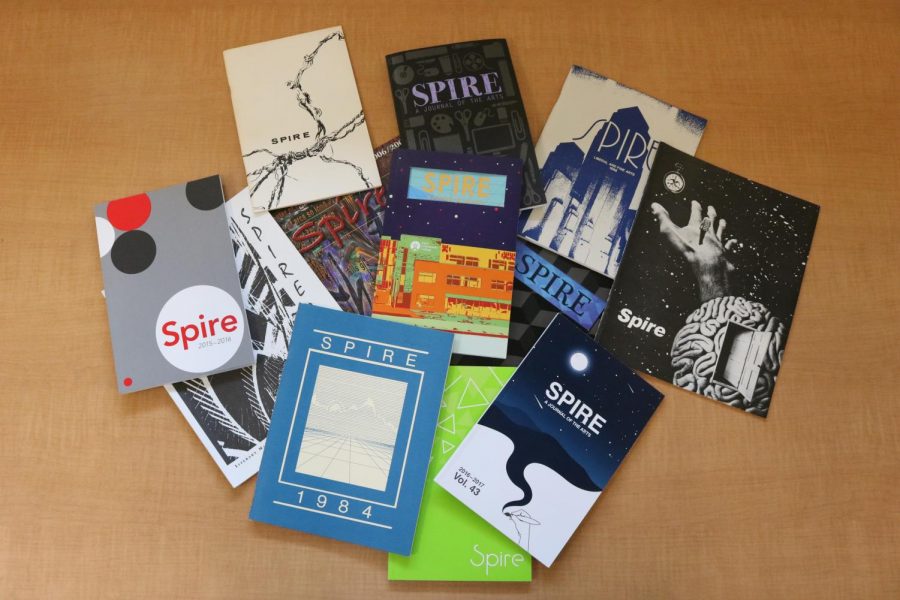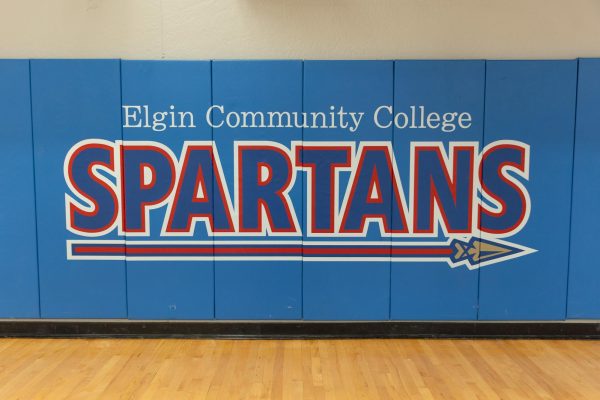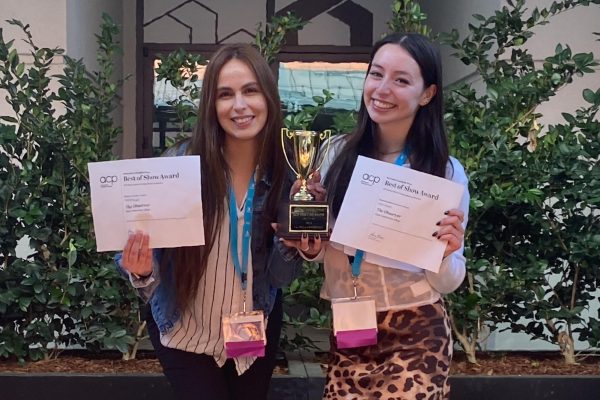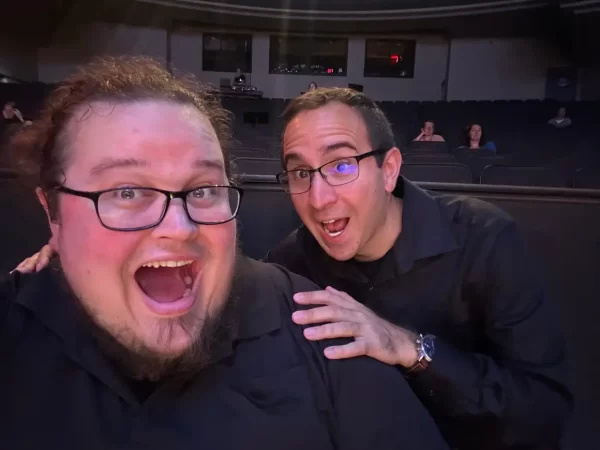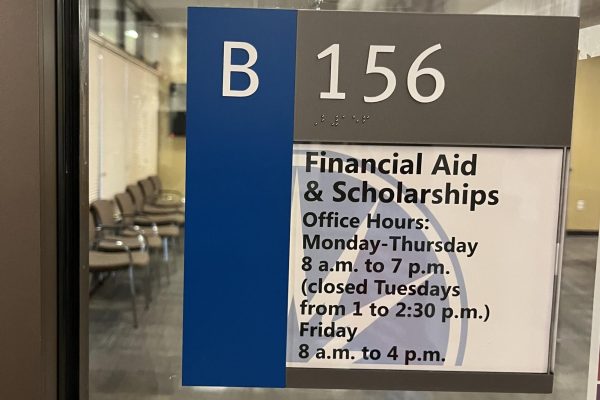SPIRE: A journey of the arts
ECC’s SPIRE Journals from past to present
April 29, 2018
A poet’s deepest thoughts, a storyteller’s true experience, an artist’s unique perspective, and a photographer’s captured moments. All coalesce into one, colorful, creative journal.
Elgin Community College’s SPIRE journal has been a blend of student poetry, fiction, creative nonfiction, and visual artwork for decades, developed by the students, and distributed for the students. At the beginning of each semester, students are given the opportunity to submit works of art for a chance to be featured in the magazine. The selection process is a long and tedious one. Students go through all of the submissions and it can be tough deciding what should be included.
“The work that is selected to go in it is selected by student editors, the design of the magazine is laid out and created by students in the art department,” said SPIRE advisor Rachael Stewart. “We try as much as possible to make it a student-led initiative.”
New to this year, the SPIRE journal curation process has recently become a free-class, taught by an adjunct instructor of Communication Design, Alexis Bach.
“It’s not like things are randomly placed,” Bach said. “Our students read the stories, the students edit the text, and they plan how this entire book is going to be laid out.”
The students in the English department read each piece, identify similar themes, and organize the pieces in an order of general relation to one another. This is then sent to the art department where they conduct a similar process. The students go over all the pieces, both literary and visual, and find general themes among them. They then strategically place the visual artwork within the book so that the final product is a fluid, united collection of artwork.
“I think that’s really nice because it kind of brings everything together and makes it more cohesive,” said Jen Altman, literary advisor for SPIRE.
Stewart mentions that this practice is great for students because they are getting real-world experience and a practical skill set that the students can use to possibly get an internship at a publication someday.
This year also marks the seventeenth year of the Florence Palmer contest. The annual contest awards 900 dollars for first place, 400 dollars for second place, and 200 dollars for third place in the subjects of fiction, creative nonfiction, poetry, and visual arts.
Florence Palmer was a local teacher and poet whose attorney approached Stewart saying that Mrs. Palmer would like to sponsor a poetry contest for ECC students. This contest was strictly for poetry submissions, awarding 1000 dollars, 500 dollars, and 250 dollars for the three best poems. It wasn’t until three years ago that the Palmer contest awarded submissions of fiction, creative nonfiction, and visual arts as well.
The prize winners are chosen by a rotating team of faculty, meaning it is never the same group of people judging two years in a row. Three judges are assigned to each subject and each submission they read only depicts the student’s ID number, to avoid possible bias. The judges read the submissions independently until they’ve come down to a top five. This is when the judges meet together and agree on a mutual winner.
“We’re looking for basic competencies,” Stewart said. “It is often times an intangible quality that has to do with something that simply works… a good story is a good story.”
The forty-fourth edition of the SPIRE journal is currently available. Watch for the colorful cover resting on many of the tables around ECC and take a look at what your fellow students are capable of!


